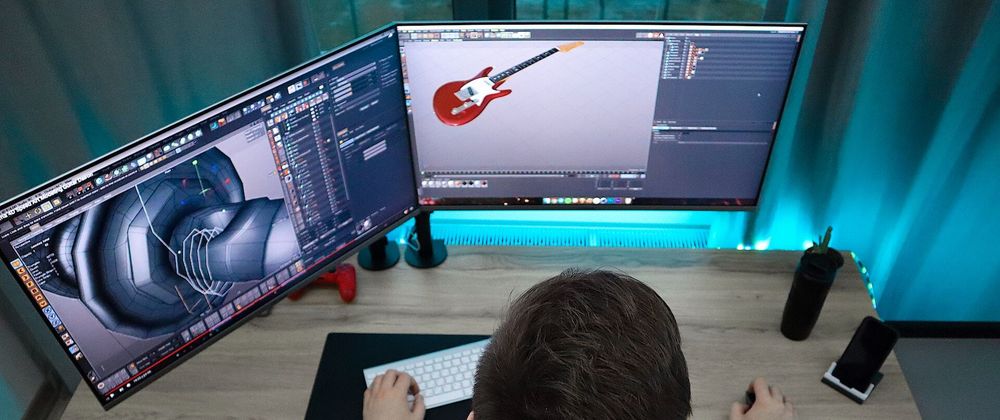As web applications continue to evolve, one aspect that has become increasingly important is user experience (UX). A major part of creating an immersive UX is animation. React, a widely-used JavaScript library, not only simplifies building user interfaces but also offers several ways to implement stunning animations. This blog will explore the different ways you can add animation to your React applications.
Why Animate Your React Application?
Before we delve into how to animate, let's understand why. React animation are more than just flashy, attention-grabbing techniques. When used correctly, they can significantly improve your application's UX by:
1. Guiding Users
Animations can play a pivotal role in guiding users through your application. They can be used to subtly draw a user's attention to specific elements on the screen, ensuring that important features or information are noticed. For instance, a gently pulsing button could draw a user's eye and make it clear that they should click on it.
In addition to highlighting specific features, animations can also guide users through a sequence of actions or transitions. A good example is a multi-step form where each completed section smoothly transitions to the next, making it clear to the user how far they have progressed and what to do next.
2. Providing Feedback
Animations can be used to provide instant visual feedback to users about their interactions with the application. This is a crucial aspect of good UX design.
When a user performs an action, such as clicking a button or submitting a form, an animation can signal that the action was successful. For example, a button could change color, move, or reshape itself when clicked. This feedback reassures users that the system has received their input and is responding accordingly.
3. Enhancing Perceived Performance
While performance optimization is a critical part of web development, not all waiting times can be eliminated. In such cases, animations can be used to improve the perceived performance of your application.
For example, instead of showing a static loading screen while your application fetches data, you could display an animated loading indicator. Such an animation distracts the user and makes the wait seem shorter than it actually is. Moreover, it signals to the user that the app is working on their request and hasn't just frozen or crashed.
4. Increasing Engagement
Finally, animations can significantly boost user engagement. Skillfully crafted animations add a layer of polish and professionalism to your application that static interfaces often lack. They can make the user experience more enjoyable and memorable, encouraging users to spend more time on your app and return to it in the future.
In summary, animations are not just about aesthetics. When used thoughtfully, they can guide users, provide feedback, improve perceived performance, and increase engagement, significantly enhancing the overall user experience provided by your application.
CSS Transitions and Animations
The simplest way to add animations to your React application is with CSS transitions and animations.
CSS Transitions: Transitions are a way to change property values smoothly over a specified duration. For example, you could gradually change the background color of a button when it's hovered over.
CSS Animations: More complex animations can be created with CSS @keyframes rule. You define different styles at various points (keyframes) during the animation, and the browser smoothly transitions between them.
Although powerful, CSS transitions and animations have limitations when it comes to dynamic, interaction-based, or conditional animations.
React Transition Group
React Transition Group is a set of components designed to help manage component states over time, specifically designed with animation in mind.
This library consists of Transition and CSSTransition components that can help you implement entering and exiting animations when components are added or removed from the React tree.
React Spring
React Spring is a spring-physics based animation library that can be used to create natural, smooth animations.
One of the main advantages of React Spring is its ability to handle complex animations and interactions, all while maintaining a high level of performance. Whether you're creating simple UI transitions, complex multi-element animations, or interactive animations, React Spring offers a robust solution.
Framer Motion
Framer Motion is a popular animation library for React that makes it easy to create complex, interactive animations with minimal code.
One of the standout features of Framer Motion is its intuitive API. This, combined with powerful features like spring animations, SVG animations, gesture-based interactions, and more, makes it a versatile tool for creating delightful animations.
React Use Gesture
While not an animation library, React Use Gesture deserves a mention. It's a hooks-based library that can be used to handle complex gestures, such as dragging, pinching, scrolling, and more. It pairs particularly well with animation libraries like React Spring, providing a foundation for creating interactive, gesture-based animations.
Animating Route Transitions with React Router
Animating route transitions can make your single-page app feel more like a traditional multi-page site. With React Router and animation libraries like React Transition Group or Framer Motion, you can animate transitions between routes to add that extra layer of polish to your app.
Conclusion
Animations have the power to transform your React applications from functional to captivating. Whether you're using simple CSS transitions, React Transition Group for complex component state changes, or physics-based animations with React Spring, the world of React animation offers something for everyone. If you're looking to hire React developers to animate your applications, consider CronJ. With a strong team of React developers, CronJ can help breathe life into your applications, making them more engaging and intuitive for your users.



Top comments (0)